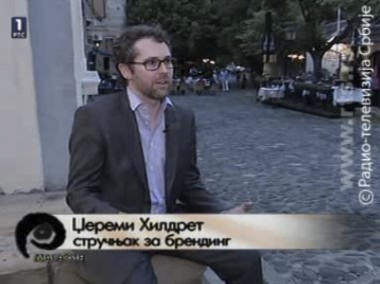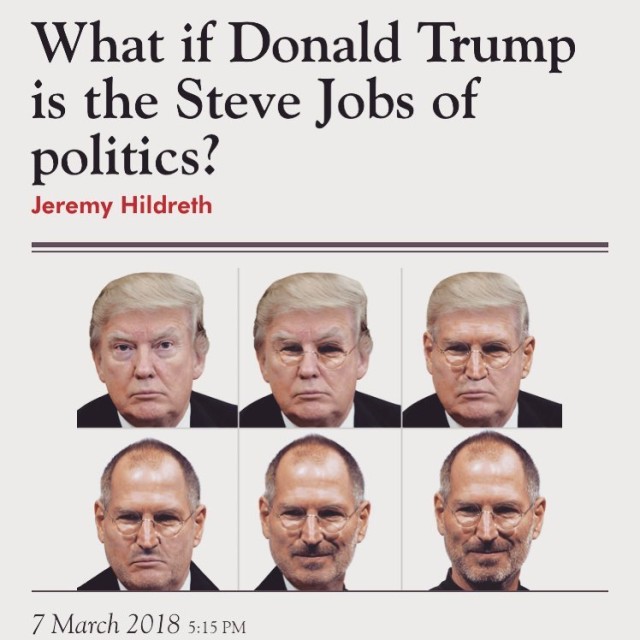One of the pleasures of doing interviews is that I discover there are things I didn’t know I knew till an interviewer provoked me to say something pithy.
This is why I rarely decline an interview invitation, and why I hope it shall always and ever be so.
This one I gave in Serbia recently has a few nuggets of wisdom in it (if I do say so myself). The interview was for some local business magazine or another (it’s hard to keep track, and even when they promise to send you a copy of the published piece, they actually do it about 10% of the time. But I don’t do it for them, anyway, or for the PR – I do it as a pop quiz on myself, and for the chance to share whatever I know with whomever happens upon it.
What does it mean, ‘place branding’?
The brand is the impression, the reputation, the ideas people have about you in their minds. Branding is the art of trying to change or embellish that.
You say that you combine unusual set of talents in your work…please describe…
I’m curious about everything, and I have a mind that likes to synthesize things, to put seemingly random things together. For instance, when I helped develop a new identity for London’s tourist board, I remembered that despite London’s wet reputation, it’s actually one of the driest capitals in Europe. So, I wrote a slogan which they used for awhile: “Visit London: It rains more in Rome.” (That is a fact, by the way. You can look it up.)
Who are your gurus in place branding?
The discipline of place branding, and specifically nation branding, has two forefathers: Wally Olins and Simon Anholt, both Englishmen, both Oxonians, both with a real sense of history and culture. As far as I know I’m the only person to actually have worked with both of these gentlemen. Simon, Wally and my own experiences – those are my three gurus.
Please describe your team involved in place branding.
I work alone, or with colleagues and partners I handpick (or who handpick me) for a particular job.
Which was your first place branding project?
Latvia, a country of 2.5 million people in Northeastern Europe who’s capital is Riga.
Problems which you were faced were…
The main problem was being too literal, and direct, in developing a creative solution to the answer “What’s Latvia?” Place branding is best approached indirectly, from the side. By which I mean, it’s best to build the brand around something specific, interesting, relevant and “off centre” rather than trying to use branding to summarize the whole of a place. We correctly pegged Latvia as “the keystone of the Baltics” – but who cares? If I could do it over again, I’d gear the brand strategy toward making Riga famous, and eventually letting people find out that Riga is in Latvia. (Note: I believe Anholt the Great took this very tack with Latvia/Riga two or three years after JH & Co. had our crack.)
Who or what did you help?
We got people talking to each other – artists and politicians and advertising folks and diplomats and journalists – and sharing a conversation about the image of Latvia. And even if the strategy wasn’t perfect, the analysis behind it was strong, and would be helpful even today to someone wanting to understand Latvia. The report is online still at the Soros Foundation’s page:http://bit.ly/osOPSE
Please describe an evolution in your work, from your first projects to the present day.
I used to favour the conventional place branding approach of developing a brand strategy first, and then formulating an action plan from that. Now I know that’s backwards, and I advise that after a small amount of thinking and discussion, the client take a few definite actions; only then should more discussion and strategizing take place.
Do you find inspiration in movies, books, art, design? Please mention them…
Yes, and also in writers and designers. Stephen King’s On Writing is a great book about marketing, though he never meant it that way. And Frank Gehry shares some great insights into the creative process in his interviews and in that documentary film about him, Sketches of Frank Gehry (and also in this TED conversation, when he says contrarian things like “I used to think it was necessary to take clients seriously” [I'm paraphrasing]).
Which was your most successful project?
Visit London, maybe. Because it had the tightest brief. The trade press called the result “near perfect” which is basically unheard of.
Which was your failure project?
East Timor. Because it was really valid work, but it went nowhere; they didn’t implement any of it, I don’t think.
What project has given you the most satisfaction?
East Timor again. Through that project I realized it’s possible to create perceptual assets even when you have near-zero tangible, conventional assets. A fascinating country—a scene of momentous human triumph—but there’s not much on the ground to look at. And it doesn’t matter, because you can have a one-of-a-kind, CNN-quality experience of resistance and revolution, in complete safety.
Please tell me more about your project “Visit London” and collaboration with Boris Johnson.
With Saffron, we made a new corporate identity for Visit London, who are the city’s leisure and business tourism promotion agency. Later, with Johnson’s backing as mayor, Saffron widened the application of that visual identity to more London departments—the whole city, basically, except for London Underground, whose identity is iconic—and I worked separately on the strategy for that, which linked everything under the Big Idea-type headline “London is front-row seat.” I heard through his advisers that Boris liked it a lot, but I have not met him personally.
Have you ever been on Balkan peninsula? How can we position ourselves?
Balkan peninsula? I’m intrigued. I don’t know what you should do. What about luring a famous novelist to live there for six months while writing his or her next book?
Your next big project is…
I will try to make Mongolian cashmere famous and super-expensive. Already it is the best soft wool in the world, they tell me; we need to find ways to give it the reputation and cache to match. We need to brand Mongolian cashmere. [Ed: I've now been in Mongolia two weeks and this is shaping up to be possibly the most interesting project I've ever worked on. If you know anything about cashmere, wool, or outdoor fashion, and are interested in place of origin branding, please write me.]
What books do you have on your bedside table?
Jonathan Raban’s Soft City (‘A psychological handbook for urban survival’) and The Master and Margarita by Bulgakov.
Where do you get news from?
I like to talk to taxi drivers. Also, I’ve installed the PULSE and Reeder apps on my iPhone and am constantly tweaking my RSS feeds. Along with Twitter and Facebook, this is how I keep tabs on the world. I try to keep it so that 50% or more of my reading comes from outside my industry, country and comfort zone. It gives the right balance of staying informed and keeping fresh.




